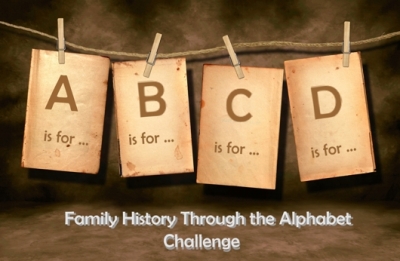
Proud descendant of the two gentlemen below coming it at nearly 3′ tall!
Continuing the Family History Through the Alphabet series… V is for Vital Statistics! Line up your ancestors and check out their vitals!
Definition of VITAL STATISTICS
1: statistics relating to births, deaths, marriages, health, and disease2: facts (as physical dimensions or quantities) considered to be interesting or important; especially : a woman’s bust, waist, and hip measurements~ Merriam-Webster Dictionary
When genealogists speak of “Vitals” we are usually referring to the information obtained from Vital Records: Births, Marriages, and Deaths. The term “Vital Statistics” refers to stats relating to these records. Although the second definition is primarily used for a woman’s physical “stats,” I’m using it in a slightly different non-sexist way. For me, Vital Statistics are the information I’ve obtained from genealogical records about my ancestors’ physical descriptions such as their height, hair color, eye color, and more. This information is especially relevant to me for the ancestors for whom I have no photograph – these “stats” are the only way for me to see what my ancestor looked like.
Where does one find such information? If your ancestor immigrated to the United States in 1906 or 1907, the passenger arrival records include the immigrant’s physical description: height, complexion, color of hair and eyes, and identifying marks. Draft registration cards are a great source of physical descriptions for male ancestors. Naturalization records also ask for physical descriptions. Other resources might include military records or employment records.
When my great-grandfather Joseph Zawodny filled out his WWI draft registration card in 1918, he was 38 years old. The cards were not very specific, and he listed his height and build as “medium” with brown eyes and dark hair. But what was considered medium height and build back then? The more specific information requested for his Declaration of Intention four years later in 1922 might answer that. He lists his height as 5’7-1/2″ and his weight as 164 pounds. He had a fair complexion, brown hair, and brown eyes – which fits with the black and white photograph I have of him.
Then again, the records may not always be correct or consistent. Take, for example, my other great-grandfather, Louis Pater. When he arrived in the U.S. in August, 1907, he was only 14 years old. He was only 5′ tall with blond hair and blue eyes. On his WWI draft card at age 23, he said he was “tall” and “slender” with brown hair and green eyes. Four years later on his Declaration of Intention, he lists his height as 5’10” and weight as 150 pounds. He has a “dark” complexion, “dark brown” hair, and “grey” eyes. Finally, on his WWII draft card at age 48, he seems to have shrunk to 5’9″ and put on a few pounds at 190. He has a “ruddy” complexion, “brown” hair, and “brown” eyes! So, were his eyes blue, green, gray, or brown? Likely gray – that was the color of the eyes for the entire Pater family and he passed them on to his son!
I don’t have any photograph of my great-grandmother Rose Piontkowski. But because she arrived here in 1906, I know from the passenger list that at the age of 41 she was 5’3″ with brown hair and blue eyes. It’s not much, but at least it gives me some idea of what she may have looked like. I don’t have a photograph of her husband John either. He was too old for either draft, but he filed his Declaration of Intention in 1920 at the age of 49. He was 5’8″, weighed 150 pounds, had a dark complexion, brown hair, and gray eyes.
Sometimes the descriptions on the passenger lists aren’t very flattering! Take my great-great grandmother Antonina Pluta Pater. Thanks to her passenger arrival record, she will forever be known as having a “sallow” complexion and a “wrinkled forehead” in addition to her 5’2-3/8″ frame, brown hair, and blue eyes!
Vital stats such as height or eye color are obviously not as useful as actual vital statistics like birth and death dates. But, it does give us a nice “look” at our ancestors. It is also fascinating to create family trees that show things like eye color – biology class in high school suddenly becomes more interesting. So as your family tree grows, take some “measurements” along the way and see which ancestors you most resemble!
 [Written for the weekly Family History Through the Alphabet Challenge]
[Written for the weekly Family History Through the Alphabet Challenge]




 A recurring theme on this site is my desire to find photographs of my ancestors because I have so few. I even entitled one post about Elizabeth “
A recurring theme on this site is my desire to find photographs of my ancestors because I have so few. I even entitled one post about Elizabeth “


